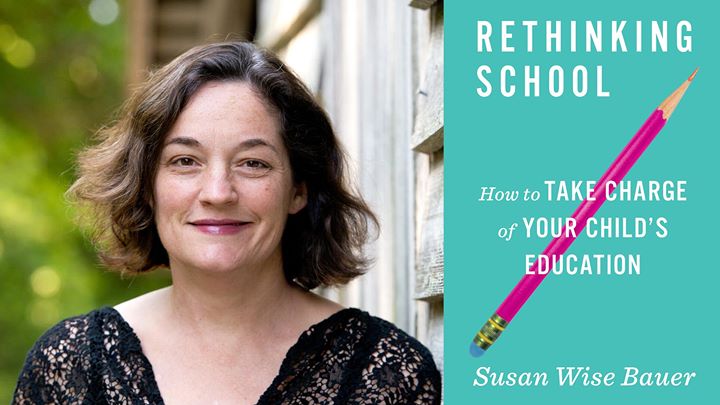
 Susan Wise Bauer is a work in progress, just like the rest of us. The author of The Well-Trained Mind and the Story of the World series can sometimes come across as super-intelligent (which she is) and having it way more together than the rest of us making our way through the daily challenges of homeschooling, but, as it turns out, her attitudes on curriculum and the “right” way to homeschool have evolved with time. Like so many of us, the catalyst for that change was a child who didn’t fit the established mold.
Susan Wise Bauer is a work in progress, just like the rest of us. The author of The Well-Trained Mind and the Story of the World series can sometimes come across as super-intelligent (which she is) and having it way more together than the rest of us making our way through the daily challenges of homeschooling, but, as it turns out, her attitudes on curriculum and the “right” way to homeschool have evolved with time. Like so many of us, the catalyst for that change was a child who didn’t fit the established mold.
Bauer’s latest book, Rethinking School: How to Take Charge of Your Child’s Education, is not intended only for homeschoolers. Rather, she encourages all parents to rethink their assumptions about school, whether their child is in a traditional school or being homeschooled. She offers strategies for working with teachers and other school professionals when a child and a school situation don’t seem to be a good fit in order to improve the educational situation. She also invites homeschoolers to think out of the box. Even though we have taken that fateful step to move away from a brick-and-mortar school, we can often still be limited by the “school” concept – that children need to learn a set list of skills at a given age or else all is lost. She maintains that “all parents can learn how to flex our K-12 system so that it fits our children – rather than forcing our children to conform themselves to school.
Bauer is honest in this book, sharing part of her family’s story about her college-aged atypical child:
I should have stopped, years before, and pursued some sort of radical alternative for this child—but I didn’t. . . Even though I was homeschooling, I couldn’t step out of the box and discard all of the books and techniques and projects and papers and subjects that were working so well for my other three children. . . .If I could do it again, I’d make some radical changes. . . I’d find a way to let that child travel, and volunteer, and work, and develop trade skills. . . I wouldn’t push traditional college. (214)
She encourages parents to seek help when children are struggling, to “regard the label ‘learning disability’ as signifying ‘This child needs a different approach,’ rather than ‘Something is wrong with your child.’” This is excellent advice, but then, in a troublesome paragraph, she dismisses those of us struggling with children who have high-functioning autism:
I have no training in psychology, so I won’t announce that ASD-1 behaviors should not, in fact, be classified on the autism spectrum.
But, as a mother of four and grandmother of one, I can say that so-called problem behaviors are a lot more likely to occur in children who aren’t taught and praised, who are given unclear commands, who are asked to do tasks that they can’t manage, and who aren’t provided snacks when their blood sugar gets low. (52)
As a parent of one of these children, all I can say is “ouch.” There’s nothing I enjoy more than being told I am a bad parent and that my child’s difficulties are all my fault. But, as I indicated, Bauer is a work in progress. Perhaps eventually she’ll learn that this isn’t the case, that the behavioral challenges of ASD-1 are real, and that those of us parenting these children are doing the best we can under difficult circumstances.
In addition, for those parents who want to stay within a traditional school system, Bauer suggests being a part-time home educator. For example, she suggests teaching your child to read before he or she starts school. That’s great advice for children who are ready to read at age four or five, but many children who go on to read proficiently are six or seven before their brains are ready to make those literacy connections. In those cases, such early attempts at reading instruction are futile and frustrating for both parent and child.
These criticisms aside, Bauer does have much to offer to the current conversation regarding education. She offers many worthwhile concrete suggestions for working with your child’s school and for taking the leap into homeschooling should that prove to be the best fit for your child and your family. She encourages both parents and children to work together to create an educational plan that is a good fit for the individual child. Bauer is willing to consider the possibility that radical steps are sometimes necessary. She understands that one-size-fit-all solutions rarely work.
There is a great deal to ponder in Rethinking School. While you might not agree with everything she has to say, any parent with a child who is struggling in a traditional educational framework would be wise to read this book.

